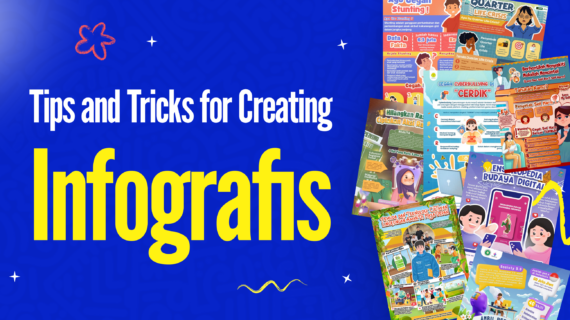Creating Informative and Engaging Infographics — Infographics are a highly effective visual tool for conveying complex information in a simple and engaging manner. By combining text, images, and graphics, infographics can make data more understandable and memorable.
Why are Infographics Important?
- Facilitates Understanding: Infographics present information in a visual format that is easier to digest than plain text.
- Increases Engagement: Attractive and interactive designs make infographics more appealing to view and share.
- Improves Information Retention: Visually presented information tends to be remembered more easily.
- Strengthens Branding: Consistent infographics with a brand’s visual style can reinforce brand identity.
Tips for Creating Effective Infographics
- Define Your Goal:
- What do you want to communicate? An effective infographic has a clear purpose.
- Who is your target audience? Tailor the style and language to your audience.
- Gather Relevant Data:
- Accurate data: Ensure your data comes from reliable sources.
- Interesting data: Choose data that is relevant and engaging to your audience.
- Choose the Right Infographic Type:
- Static infographic: Suitable for presenting simple and easy-to-understand data.
- Interactive infographic: More suitable for presenting complex data and allowing users to explore the data more deeply.
- Video infographic: Engaging and suitable for presenting dynamic information.
- Create an Attractive Design:
- Choose a suitable color palette: Use contrasting and eye-catching colors that are harmonious.
- Use easy-to-read fonts: Select clear and distinct fonts.
- Create a simple layout: Avoid too many elements that can distract from the focus.
- Use icons and illustrations: Icons and illustrations can make the infographic more engaging and easier to understand.
- Tell a Story:
- Create a clear narrative: Connect each element in the infographic to form a coherent story.
- Use compelling titles and subtitles: Encourage readers to continue reading.
- Optimize for Social Media:
- Appropriate size: Adjust the infographic size to suit the social media platform you will use.
- Use alternative text: Add alternative text for images so that infographics can be accessed by users with disabilities.
Tools You Can Use
- Canva: An easy-to-use graphic design platform with many ready-made templates and collaboration features.
- Piktochart: Specifically for creating infographics, offering various templates and data visualization features.
- Adobe Illustrator: For professional designers who want more flexibility.
- Infogram: A platform that allows you to create interactive infographics easily.
Examples of Engaging Infographics [Insert images of compelling infographics relevant to the topic]
Conclusion
Infographics are a powerful tool for communicating information visually and engagingly. By following these tips, you can create infographics that are informative, attractive, and memorable. Remember that the key to a successful infographic is to focus on your goal, choose the right design, and tell a compelling story.
Download Premmium Assets from Stocksvector to create amazing infographics!
- Search Enter the website URL : https://stocksvector.com/
- Create an account
- Copy paste link the resources you want (Website Templates)
- Click icon download “⬇️” and you’re done!
Read More:



